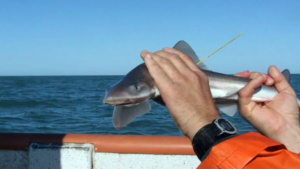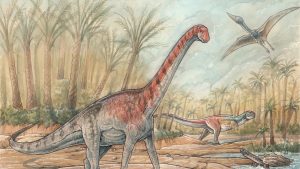Scientists discover remains of 30,000 Year Old Condor in Argentina
With the wings open, its total length is around 2 meters and 50 centimeters and because it had stronger claws than the current condor, paleontologists estimate that it could hunt its prey. The fossil was found just 34 kilometers from the capital city of Buenos Aires.
Agencia CTyS-UNLaM - The researcher of the Argentine Museum of Natural Sciences (MACN-CONICET) Federico Agnolin commented to the Agencia CTyS-UNLaM that "this discovery is unique for Argentina, because it is the first time that a well preserved specimen of an extinct condor has been found and, until now, its existence was unknown."
This new type of condor was baptized as Pampagyps imperator. "His name means something like emperor vulture of the Pampas", said Agnolin, lead author of the study that is going to be published in the Journal of the Argentine Museum of Natural Sciences (MACN). After that, he added: "It was a large condor, which may have reached up to three meters wide with open wings".
If someone travels 30 thousand years to the past, when this bird prevailed in the skies of the Pampean region and the man had not reached these latitudes, he would find a mega terrestrial fauna completely different from the one we have now.
"There were mastodons, which were very much like today's elephants; lazy giants which weighed more than a ton; glyptodonts, with almost the size of a small car; and among the carnivores was the well-known saber toothed tiger", said specialist Agnolin.
Paleontologist Federico Brissón Egli, co-author of this study and also a researcher at MACN and CONICET, emphasized that "the most important thing about this site of Marcos Paz is that, besides finding fossils of large animals, also remains small ones, microvertebrate, birds, lizards, fish, which are harder to find well preserved over time, and that's what makes this quarry special, because it offers a window to the past of these important species”.
Part of the quarry was declared as a paleontological reserve, only usable for scientific purposes. Researchers made a new discovery at each step they make in the site that has more than six-hectare fully explored, (see video). But undoubtedly, the most important discovery that has given this place since 2010, when it began to be studied, is, precisely, the Pampagyps imperator, because it is a species unknown until today.
The researchers determined that this bird had a great ability to open and close its claws. "A backbone bone shows that the muscle insertions were much larger than the current condors, so it could possibly catch a prey", explain the Dr. Federico Agnolin to the Agencia CTyS-UNLaM.
Now a days, condors eat only carrion. The emperor of the Pampas, with its up to 3 meters in height, must have been fearsome for its prey, among which there could be small vertebrates such as rodents, reptiles and ducks.



